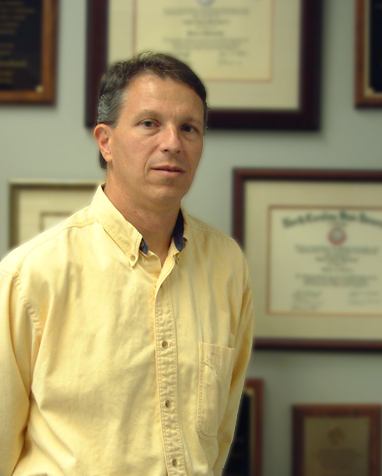GRI Receives $9.6 Million NASA Grant
March 23, 2006 GeoResources Institute received a federal grant of $9.6 million from NASA's Applied Sciences Directorate to help develop a stronger and more accessible Earth Science Research Database for use by a wide variety of U.S. governmental agencies. Marshaling its geospatial technology expertise, GRI is helping NASA build a computerized, one-stop data resource. It could have global research impacts on such diverse issues as climate change, bioterrorism, transportation, and population trends.
GeoResources Institute received a federal grant of $9.6 million from NASA's Applied Sciences Directorate to help develop a stronger and more accessible Earth Science Research Database for use by a wide variety of U.S. governmental agencies. Marshaling its geospatial technology expertise, GRI is helping NASA build a computerized, one-stop data resource. It could have global research impacts on such diverse issues as climate change, bioterrorism, transportation, and population trends."We are using high-performance computing, remote sensing, rapid prototyping, geographic information systems, global positioning systems and 3-D landscaping visualization capabilities that will come together in a very complementary way," said GRI director David Shaw (pictured right), co-principal investigator for the grant.
"They are looking for a data system that will be globally accessible, globally searchable--sort of a 'Google' for NASA research," he added. "At the end of the two-year grant period, we expect to have this system fully operational."
Also providing support for the NASA project are the University of Mississippi's Geoinformatics Center, and a team from the Stennis Space Center comprised of the Institute for Technology Development and Science Systems and Applications Inc.
"I think this positions not only Mississippi State, but the entire state of Mississippi to be more competitive," said Shaw. "We're going to provide a significant contribution to the base system from which the next generation of research will be determined."
 Co-principal investigator for GRI's lead role in the project is Robert J. Moorhead (pictured left), a professor of electrical and computer engineering and GRI associate director for research. He also is an expert in rapid prototyping technology, which produces working models from computer-aided designs or animation modeling software.
Co-principal investigator for GRI's lead role in the project is Robert J. Moorhead (pictured left), a professor of electrical and computer engineering and GRI associate director for research. He also is an expert in rapid prototyping technology, which produces working models from computer-aided designs or animation modeling software.The goal of the rapid prototyping capability is to speed the evaluation of potential uses of NASA research products and technologies, and improve future operational systems by reducing the time to access, configure and assess their effectiveness.
"Our rapid prototyping capability will jumpstart NASA's new system so that it can be used more quickly," Moorhead explained.
GRI's three-pronged strategic plan will provide a solutions network or interactive database, based on existing knowledge, for easy access by all NASA technology users; a rapid prototyping component that simulates new, improved datasets from existing technology; and integrated systems solutions approach for conducting actual research.
"NASA's earth science program has been criticized for developing technology in a vacuum and just sort of throwing the results over the fence, expecting somebody to be there to catch it," said Shaw. "Now, they want their users to plug the technology into their respective systems much earlier in the process, rather than having to start from scratch."
For more information, contact:
Dr. Shaw - (662) 325-9575 - dshaw@gri.msstate.edu
or
Dr. Moorhead - (662) 325-2850 - rjm@gri.msstate.edu.
Additional links:
MSU News Item
ABC News Item
